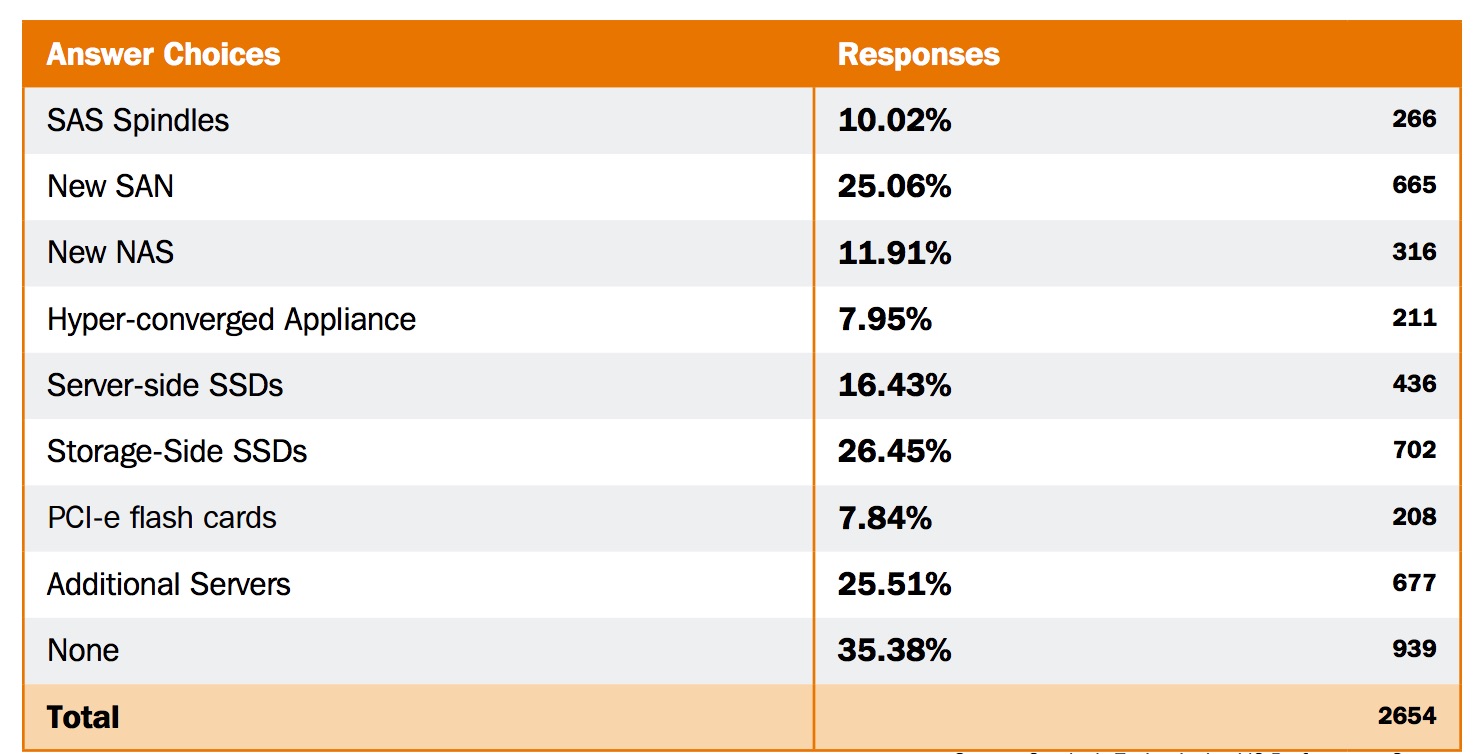77% of Organizations Experienced I/O Problems Since Virtualizing
Survey by Condusiv in North America and Europe
This is a Press Release edited by StorageNewsletter.com on January 19, 2016 at 2:40 pmCondusiv Technologies Corp., in software-only storage performance solutions for virtual and physical server environments, announced the availability of results from its recent I/O Performance Survey.
Data collected from more than 2,654 IT professionals in North America and Europe reveals poignant information on how enterprises have struggled with I/O bottlenecks since virtualizing; what actions they have already taken since virtualizing and how they plan to improve I/O performance in the coming year.
The full 17 page report is available for download after registration.
Key findings in the survey include:
- 77% of organizations report I/O performance issues since virtualizing
- More than 1/3rd of respondents (36%) are currently experiencing staff or customer complaints regarding sluggish applications running on MS SQL or Oracle
- Nearly 1/3rd of respondents (28%) are so limited by I/O bottlenecks that they have reached an ‘I/O ceiling’ and are unable to scale their virtualized infrastructure
- To improve I/O performance since virtualizing, 51% purchased a new SAN, 8% purchased PCIe flash cards, 17% purchased server-side SSDs, 27% purchased storage-side SSDs, 16% purchased more SAS spindles, 6% purchased a hyper-converged appliance
- In the coming year, to remediate I/O bottlenecks, 25% plan to purchase a new SAN, 8% plan to purchase a hyper-converged appliance, 10% will purchase SAS spindles, 16% will purchases server-side SSDs, 8% will purchase PCIe flash cards, 27% will purchase storage-side SSDs, 35% will purchase nothing in the coming year
- Over 1,000 applications were named when asked to identify the top two most challenging applications to support from a systems performance standpoint. Everything in the top 10 was an application running on top of a database
71% agree that improving the performance of one or two applications via inexpensive I/O reduction software to avoid a forklift upgrade is either important or urgent for their environment
Have you seen I/O performance issues since virtualizing?
(Answered: 2,654)
To improve I/O performance over the next year,
please select any of the following that you plan to purchase:
(Answered: 2,654)
More than 70% of the responding IT professionals had virtualized more than 50% of their environment. Respondents from companies with employee sizes under 100 employees were excluded from the results, so results would not be skewed by the low end of the SMB market. Many more results from other probing I/O performance questions and environment details are found in the full page report.
“It is clear that the unintended consequence of virtualization has been a tsunami of random I/O that has choked underlying storage subsystems, leaving organizations in a game of catch-up with no other choice but to spend their way out of the problem,” said Brian Morin, SVP, global marketing, Condusiv. “This is due to the added complexity that virtualization introduces to the data path via the “I/O blender” effect that randomizes I/O from disparate VMs and also due to amplification of Windows write inefficiencies at the logical disk layer, which erodes the relationship between I/O and data. The result is small, fractured I/O that reduces throughput and inflates IO/s by 50% on heavy workloads. Since native virtualization out-of-the-box does nothing to optimize the I/O stream, organizations must respond with either a brute-force approach of overbuying and overprovisioning with more flash hardware than necessary, or turn to 3rd party software solutions like Condusiv’s V-locity I/O reduction software that can solve the root cause performance problems in virtualized environments for 50-300% faster application performance on existing infrastructure.“













 Subscribe to our free daily newsletter
Subscribe to our free daily newsletter

